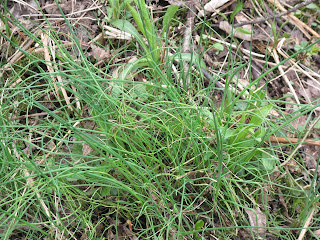 |
| "Blizzard" snow peas |
Nothing says summer like appearance of mounds of fresh peas and basil leaves. Long in coming to the northeast U.S. this year, summer does seem like it is finally here. Planted a month later than usual, the snow peas have moved beyond a small handful to enough to occasionally steam and freeze a batch for next winter's soups. The sugar snap peas, on the other hand, remain just a handful, a lesson about the value of spending a few extra dollars to buy fresh seed.
 |
| Genovese basil, after shearing for a triple batch of pesto |
The basil, on the other, is growing wildly, the photo at left taken
after I sheared the plants for a triple batch of pesto. A rainy Saturday made the perfect day to process it. (And yes, mom, there's a batch for you!)
The basil is growing in hoop house, along with the other heat-loving crops: tomatoes, peppers, eggplant and cucumbers. In fact, while I treasure those winter greens, it's with the summer crops that the hoop house is more than paying for itself. With evening temperatures regularly falling into the 50s and low 60s, we've left the doors on this summer, so we can close them up at night, and the plants seem the happier for it.
Pesto is at its best with lots of parmesan cheese, but since I can't digest dairy, I make a vegan version: using 1-2 Tbs of miso instead of the cheese. It provides that needed "tang." A few extra pine nuts, and it's wonderful.
The pesto goes into an old ice-cube tray to freeze, and then the frozen cubes go into freezer bags. Comes winter, I can take out just what I need at the moment, without having to defrost an entire batch.
 |
| Thai Basil |
For variety, the Thai basil (right) is always much smaller and more delicate. I don't use it for pesto. But its leaves, flavored with a hint of anise, are perfect in stir fries, and its purple flowers stand in lovely contrast to the spring-green leaves. They remind me of a trip to southern California a few years ago, where we saw a four-foot hedge of Thai basil shrubs, perennial in that climate. I recognized it by the flowers, before we got close enough for our noses to confirm the sighting. Before that, I hadn't thought about the potential of our small, unassuming summer guest. I meant to pot up one of the plants last fall and bring it into the house for the winter, but never got around to it. Perhaps this year I'll try to grow it out, like the rosemary, an potted shrub overwintered in the kitchen, a reminder of places closer to the equator where plants (and people) rarely freeze.



















































